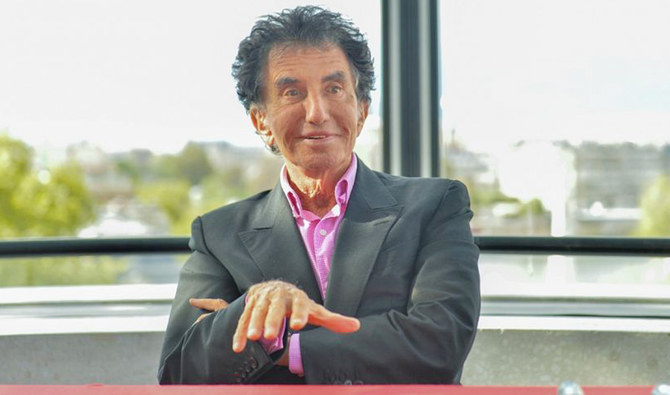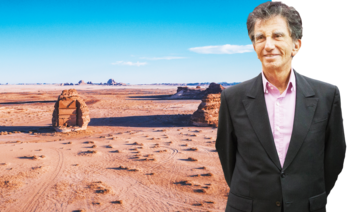PARIS: Historically a source of discovery and wonder, culture has played a big role in knowing and understanding others. In this regard, the Arab World Institute (AWI), under the chairmanship of Jack Lang, is helping to build a bridge between cultures.
Have the attacks in France changed the outlook of the French toward their compatriots of Arab origin and toward the Arabs? Lang does not think so. “Most citizens are educated, civilized people. They know full well that the crimes perpetrated by terrorists are acts committed by fanatics, by obscurantists, and they know that these murderers invoke religion to justify the unjustifiable.”
For the president of the AWI, most French people know that these “criminals have nothing to do with Muslims.”
Referring to the murder of school teacher Samuel Paty on Oct. 16, Lang, a former education minister, said that he was “deeply hurt, traumatized and shocked by this crime.”
In all circumstances, he said, a teacher is sacred, just like any human being, whatever his or her religion, ethnicity or age.
“The person of a teacher must be sacred, because he is someone who elevates the dignity of his students, who helps to transmit knowledge.”
Education, school and the media have an important role to play in combating the confusion between Islam and terrorism.
“Culture has played and is playing a very important role, especially in certain neighborhoods. A very large number of artists, today very famous, very well- known, creators, painters, musicians, poets, writers and filmmakers come from these neighborhoods where there is a large Muslim representation, and bring their talent and their imagination. We want to say thank you to all these artists and creators who today are fully part of French culture. All the French recognize themselves in them. ”
The AWI and its president are dedicated to promoting the richness of an enlightened Muslim civilization. A few years ago, a successful Hajj-themed exhibition was co-produced with the King Abdul Aziz Library, and other scientific institutions.
“Very often, Islam is present in our conferences, in our exhibitions, in our meetings,” Lang said. “We maintain regular relations with representatives of Muslim organizations in France. We have often invited imams to the Arab World Institute. Frequently, the rector of the Great Mosque of Paris, which is 300 meters from the institute, and with which we have developed a close bond, comes to visit us. I also visit there regularly. We have relationships with many other imams and many other mosques. “
Culture, a bridge between civilizations
For Lang, this is obvious. “Culture is a real bridge between civilizations, peoples and countries. The enemy of peace is ignorance, unawareness. All cultural institutions, schools, universities and anything that contributes to raising the knowledge of history, of the present, of art, are sources of understanding. It’s absolutely obvious,” he said.
“When we study the history of the Arab world, we see that at many times peoples, religions, cultures have met and enriched each other.”
Lang is convinced that the beauty of literature, painting and creativity in general will help advance mutual understanding.
“Islam is a great religion of the world, enlightened and peaceful. These criminals have nothing to do with this religion. Many do not even speak Arabic and know nothing about Muslim civilization. They are fanatics who would like to impose their law by force. It is not a reflection of the Muslim religion, which, on the other hand, deserves respect.”
Lang also refers to “misunderstandings” and explains that French President Emmanuel Macron’s comments have often been misinterpreted.
“It is obvious that the French president respects Muslims. Muslims in France are full citizens. They are part of us, of our life. Muslim citizens, practicing or not, bring a lot to the French nation: their energy, their work, their creativity, and their intellectual and artistic qualities. I just believe that we should speak positively about this subject and not in a fearful way.”
The AWI president is optimistic. “I would like to use a lovely expression from Nelson Mandela. His dream was, speaking about South Africa, to create a ‘rainbow nation.’ Well, I believe that France has also become in its own way a rainbow nation.”
Do more for real equality of opportunity
The Francophonie is a tool for integration, the AWI president believes, provided that it is “a fraternal and egalitarian Francophonie.” It brings together French-speaking countries around the world that speak French.
“For me, it is not limited to France. The Francophonie is a great idea if it is shared, truly shared, by countries with multiple traditions,” he said.
“The French language, which is enriched by various contributions from other languages, from Quebec, the Maghreb or sub-Saharan Africa, is a reflection of our society. Just as Arabic is a language shared by hundreds of millions of people, from different cultures and traditions, which makes it fantastic. The Arabic language is universal, but spoken with particular nuances in each country, and this is also what makes it strong.”
However, he said: “It is true that there are some residents in all districts of France who are not sufficiently supported materially to be able to integrate into life. Of course, efforts are being made by schools, universities, and art and culture centers. But we must continue to act.”
Moreover, he said “there is a feeling of common belonging to a nation which has succeeded for centuries, not only recently, in being a real ‘melting pot,’ as the Americans would say.”
But Lang still believes that there is still a lot of work to be done, especially with youth, and he wants to continue fighting so that the right to equality for all young people in France, whatever their origin and their religion, “is fully guaranteed.”


























